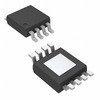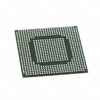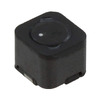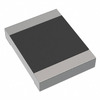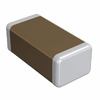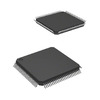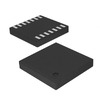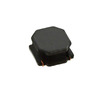Comprehensive Guide to the STM8S003F3P6TR Microcontroller
When it comes to embedded systems, efficiency, and low power consumption are dominant. The STM8S003F3P6TR microcontroller from STMicroelectronics strikes a perfect balance between these two needs. Built around an 8-bit architecture, it offers robust performance, versatile integration options, and specialized features designed for energy-sensitive applications. In this article, we’ll explore its architecture, basic functionalities, and diverse applications, showcasing how this microcontroller stands out as a reliable and cost-effective solution for industries ranging from consumer electronics to industrial automation.Catalog
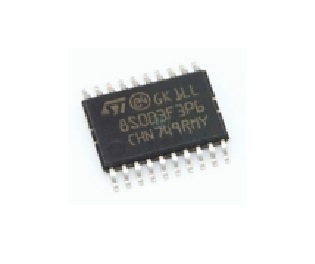
Understanding STM8S003F3P6TR
The STM8S003F3P6TR, meticulously engineered by STMicroelectronics, emerges as a versatile 8-bit microcontroller built around the steadfast STM8 core architecture. This device features a 10-bit Analog-to-Digital Converter (ADC), enabling precise analog-to-digital conversions. It is supported by 8KB of flash program memory and a clock speed of up to 16 MHz, ensuring competent performance.
Its operational scope extends across a wide temperature range (-40°C to 85°C) and a flexible power supply voltage range (2.95V to 5.5V). Designed to cater to diverse sectors, the microcontroller finds its place in domestic appliances, automotive electronics, industrial automation, and security devices, highlighting its reliability in a multitude of applications.
Exploring Alternative Models
The selection of a microcontroller can notably affect both operational efficiency and product reliability. For example, the STM8S003F3P6TR is frequently deployed in household appliances, where temperature resilience and steady performance are dominant. Within automotive electronics, its 10-bit ADC provides dependable data acquisition, ensuring accurate sensor readings. This accuracy is something many automotive engineers depend on for desired safety and control systems.
Structure of STM8S003F3P6TR
The STM8S003F3P6TR boasts an array of integrated modules, each contributing suggestively to its operational prowess.
ADC Module
The ADC module in the STM8S003F3P6TR incorporates a 12-bit analog-to-digital converter which excels in capturing high-resolution analog signals with remarkable precision. This level of accuracy is active for significance control in a variety of applications, such as sensor data collection and signal processing. Industries like automotive, industrial automation, and consumer electronics find these characteristics invaluable for developing systems that need to be both responsive and reliable.
Storage Module
Comprising 8KB flash memory and 640B RAM, the storage module serves a dual purpose for program storage and firmware updates and workspace for data manipulation during runtime. These capacities are designed to support the performance of memory-intensive applications such as data logging and actual analysis. Such features are reflective of common practices in innovative embedded system designs.
Power Manager Module
The power manager module enhances the device's reliability and longevity by efficiently managing power and protecting against voltage irregularities and thermal threats. Major protection features include under-voltage lockout, over-voltage protection, and over-temperature protection. This module is useful for mirroring strategies employed in dangerous safety systems and energy-efficient designs used in modern electronics.
Communication Interface Module
To facilitate seamless communication with external devices, the STM8S003F3P6TR offers SPI for high-speed data transfers, I²C for multi-device interfacing with minimal wiring, and UART for serial communication. These versatile interfaces are major to meeting the diverse needs of complex system integrations, which are commonly found in IoT devices, medical equipment, and home automation systems.
Timer Module
Equipped with four 16-bit timers, the timer module can generate precise timing interrupts, used for tasks requiring exact timing. This includes motor control, signal generation, and time-based event management. These timers ensure accurate and synchronized operations for robotics, telecommunications, and precision instruments.
CPU Module
The device's core strength, the CPU module, is driven by an 8-bit STM8S core known for its efficiency in computational and data processing tasks. This architecture is ideal for various applications, from basic control tasks to complex algorithms. Common applications harness such CPUs to develop cost-effective solutions, power-efficient systems, and highly reliable embedded systems
Packaging Specifications and Contextual Applications for STM8S003F3P6TR

Package Details
The STM8S003F3P6TR microcontroller is encapsulated in a TSSOP package.
• Dimensions: 6.5mm by 4.4mm by 1mm
• Pin Count: 20 pins
PCB Layout Optimization
The compact TSSOP (Thin Shrink Small Outline Package) pointedly enhances the PCB (Printed Circuit Board) layout. This compact nature is instrumental in minimizing space while maintaining the functional integrity of the circuit and facilitating advanced thermal management, especially in high-efficiency applications or constrained environments.
STM8S003F3P6TR Pricing
As of October, the STM8S003F3P6TR is priced between 1.3 to 1.5 yuan, showing a slight decrease compared to September. Curiously, the official price stands at $0.65 (approximately 4.76 yuan). Despite this, the market price remains lower than the official rate, with some reports indicating that bulk customer prices are dipping below 1 yuan.
Factors Influencing Price Discrepancies
The discrepancy between the official and market prices can often be attributed to factors such as inventory fluctuations and supplier negotiations. In situations where supply chain dynamics shift, pricing strategies may adjust accordingly, leading to such discrepancies.
Supply and Demand Dynamics
Although STMicroelectronics has classified the STM8S003F3P6TR chip as "no longer recommended for new designs," its inventory levels reflect a resurgence in demand. This seemingly paradoxical situation suggests that while the chip may not be advised for future projects, its existing applications continue to drive substantial interest.
Benefits of Bulk Purchasing and Supplier Relationships
Reports highlighting bulk customer pricing below 1 yuan indicate notable negotiations happening between suppliers and buyers. Bulk purchases often yield weighty discounts, driven by economies of scale. Many industries leverage this approach to minimize costs and maximize efficiency. Such pricing dynamics exemplify the significance of strategic procurement practices and long-term supplier relationships. Moreover, these practices are major in ensuring competitive pricing and sustaining industry standards.
Benefits and Uses of STM8S003F3P6TR
The STM8S003F3P6TR stands out with its impressive performance and robust features. Its rapid startup times, coupled with a streamlined internal architecture, knowingly boost instruction execution speeds while minimizing energy consumption. This sleek architecture supports efficient actual control and data processing, benefitting from advanced manufacturing techniques.
Performance and Features
The STM8S003F3P6TR supports multiple communication interfaces (UART, SPI, and I2C) and a broad array of peripheral interfaces (ADC, DAC, and GPIO). These attributes make it suitable for complex applications, from industrial automation to consumer electronics, offering versatility for diverse implementations. Its high integration and cost-effectiveness add tremendous value. Equipping the chip with modules such as watchdogs, timers, and interrupt controllers simplifies the system design process. This ease of implementation bolsters the creation of reliable systems, saving development time and reducing the risk of failures in serious applications.
Applications and Integrated Features
Affordability is a hallmark of the STM8S003F3P6TR, reducing embedded system costs and accommodating budget-sensitive projects. This cost-efficiency shines in large-scale deployments, including consumer electronics, home automation, and low-end industrial applications. Its practical efficacy is evident in consumer devices where performance and power efficiency must be balanced—think smart home devices, wearables, and small-scale IoT gadgets. The chip’s practical utility is heightened by its robust support for various communication protocols, easing the integration process in mixed-technology environments.
Technical Specifications of the STM8S003F3P6TR
|
Product Attribute |
Attribute Value |
|
Manufacturer |
STMicroelectronics |
|
Package
/ Case |
TSSOP-20 |
|
Packaging |
Reel/Cut
Tape/MouseReel |
|
Core |
STM8 |
|
Interface |
I2C,
IrDA, LIN, SPI, UART |
|
Program
Memory Size |
8 kB |
|
Data
RAM Size |
1 kB |
|
Data
ROM Size |
128
B |
|
ADC
Resolution |
10
bit |
|
Data
Bus Width |
8
bit |
|
Supply
Voltage |
2.95
V ~ 5.5 V |
|
Operating
Temperature |
-40°C
~ 85°C |
|
Number
of I/Os |
16
I/O |
|
Number
of Timers/Counters |
3
Timer |
|
Number
of ADC Channels |
5
Channels |
|
Pin
Count |
20 |
|
Mounting
Style |
SMD/SMT |
|
Product
Type |
8-bit
Microcontrollers - MCU |
Characteristics of STM8S003F3P6TR
Online Debugging and Programming
One of the notable attributes of the STM8S003F3P6TR is its online debugging and programming capability. This functionality eases the development process by facilitating real-time changes and diagnostics throughout the development phase. You can leverage development tools such as IDEs and debuggers for hands-on interaction, enabling incremental improvements and rapid issue resolution. This leads to a more streamlined and effective workflow.
Low Power Consumption
The STM8S003F3P6TR shines in scenarios demanding energy efficiency due to its low power consumption. By functioning in energy-saving modes, it substantially extends the battery life of portable devices. This trait is especially beneficial in IoT devices, wearables, and other battery-dependent gadgets, where prolonging operational time is dynamic.
High Performance
At the core of this microcontroller lies the STM8, an 8-bit architecture that facilitates high-speed computing and efficient task management. Such performance can result in more responsive and capable devices. Implementing this high-performance core can often resolve the challenge of executing rapid processing tasks in real-time scenarios.
Low Voltage Detection
Low voltage detection stands out as a feature that enhances system reliability. The built-in detection circuit can activate interrupts or resets when specific voltage levels are crossed. This attribute is mainly advantageous in environments susceptible to voltage variations or when ensuring system protection against unexpected power failures, thereby bolstering the reliability of safety-dangerous systems.
Rich Memory
The STM8S003F3P6TR offers 8KB of flash memory and 1KB of RAM, providing sufficient space for both program code and data storage. This memory capacity enables the deployment of more intricate algorithms and data-processing tasks. In practical applications, having ample memory facilitates smoother operations and supports the integration of more advanced features.
Considerations When Utilizing STM8S003F3P6TR
Resource Alignment and System Design
While the STM8S003F3P6TR facilitates many applications successfully, detailed planning is required to match its features with project needs, avoiding resource wastage. This involves understanding the microcontroller's capabilities to ensure they are fully and appropriately utilized. Crafting a precise system design blueprint caters comprehensively to product specifications, enhancing both quality and performance. This phase includes examining resource allocation, power consumption, and interface compatibility, aiming to minimize operational bottlenecks and extend product lifespan.
Field experiences suggest that a well-crafted design not only ensures stable performance but also reduces future maintenance issues. For example, in smart home applications, synchronizing sensor interfaces with the microcontroller pins can streamline data processing and enhance response times suggestively.
Software Development Proficiency
Harnessing the full potential of STM8S003F3P6TR necessitates software development expertise, mostly in C and assembly languages. Proficiency in these languages enables you to exploit the hardware capabilities thoroughly, offering refined control over peripheral operations and interrupt handling. For actual processing projects, adeptness in assembly programming leads to highly optimized code, required for serious applications.
It is revealed that you can immerse themselves in hardware abstraction layers and low-level programming often achieve more stable and efficient systems. For example, in complex industrial automation systems, such expertise can profoundly improve system reliability and immediate performance.
Optimal Integration Strategies
Effective integration of STM8S003F3P6TR within broader projects requires strategic alignment with other system components. This involves careful selection of communication protocols and ensuring robust data integrity between the microcontroller and peripheral devices. Choosing suitable power management strategies is also dynamic to ensure the microcontroller functions optimally within power constraints, especially in battery-operated applications.
Systems incorporating STM8S003F3P6TR and wireless modules, such as in remote monitoring solutions, illustrate that aligning power modes and communication intervals effectively can prolong operational periods between recharges. This pointedly enhances your experience and overall system dependability.
Frequently Asked Questions [FAQ]
1. What is a microcontroller used for?
A microcontroller manages embedded system functions across a range of devices, integrating memory, peripherals, and a processor. They optimize performance and ensure efficient operations in various applications, from household appliances to complex industrial machinery. Actual examples include washing machines that run smoothly and automotive systems that perform reliably due to the efficient management provided by microcontrollers.
2. What is the maximum clock frequency supported by the STM8S003F3P6TR?
The STM8S003F3P6TR supports a maximum clock frequency of 16 MHz. This capacity allows the microcontroller to effectively handle tasks within its performance constraints, balancing processing speed and power consumption. In practical terms, this frequency ensures devices operate reliably without excessive energy use, which is substantial for battery-powered devices.
3. Can the STM8S003F3P6TR be programmed using C language?
Yes, the STM8S003F3P6TR can be programmed using C language. STMicroelectronics offers comprehensive tools and libraries to aid software development, streamlining the process and letting you focus on crafting efficient and effective code. In practice, this means that you can utilize familiar programming environments and tools, reducing the learning curve and speeding up development timelines.
4. Is there an integrated ADC in the STM8S003F3P6TR?
Yes, the STM8S003F3P6TR includes a 10-bit ADC for analog-to-digital conversion. This feature allows for precise readings of analog signals, ensuring accurate monitoring and control in embedded systems. Components like this are dangerous in applications were sensor data needs digitization, such as in environmental monitoring systems or medical devices.
About us
ALLELCO LIMITED
Read more
Quick inquiry
Please send an inquiry, we will respond immediately.

DS1990A: Redefining Security and Efficiency in Data Storage and Authentication Technologies
on September 25th
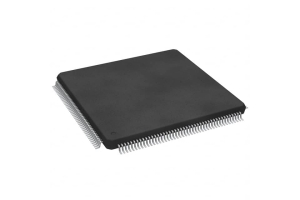
Everything You Need to Know About the STM32F429IGT6
on September 25th
Popular Posts
-

What is GND in the circuit?
on January 1th 3036
-

RJ-45 Connector Guide: RJ-45 Connector Color Codes, Wiring Schemes, R-J45 Applications, RJ-45 Datasheets
on January 1th 2606
-

Fiber Connector Types: SC Vs LC And LC Vs MTP
on January 1th 2161
-

Understanding Power Supply Voltages in Electronics VCC, VDD, VEE, VSS, and GND
on November 13th 2064
-

Comparison Between DB9 and RS232
on January 1th 1788
-

What Is An LR44 Battery?
Electricity, that ubiquitous force, quietly permeates every aspect of our daily lives, from trivial gadgets to life-threatening medical equipment, it plays a silent role. However, truly grasping this energy, especially how to store and efficiently output it, is no easy task. It is against this background that this article will focus on a type of coin cell battery that may seem insignificant on the...on January 1th 1754
-

Understanding the Fundamentals:Inductance Resistance, andCapacitance
In the intricate dance of electrical engineering, a trio of fundamental elements takes center stage: inductance, resistance, and capacitance. Each bears unique traits that dictate the dynamic rhythms of electronic circuits. Here, we embark on a journey to decipher the complexities of these components, to uncover their distinct roles and practical uses within the vast electrical orchestra. Inductan...on January 1th 1704
-

CR2430 Battery Comprehensive Guide: Specifications, Applications and Comparison to CR2032 Batteries
What is CR2430 battery ?Benefits of CR2430 BatteriesNormCR2430 Battery ApplicationsCR2430 EquivalentCR2430 VS CR2032Battery CR2430 SizeWhat to look for when buying the CR2430 and equivalentsData Sheet PDFFrequently Asked Questions Batteries are the heart of small electronic devices. Among the many types available, coin cells play a crucial role, commonly found in calculators, remote controls, and ...on January 1th 1640
-

What Is RF and Why Do We Use It?
Radio Frequency (RF) technology is a key part of modern wireless communication, enabling data transmission over long distances without physical connections. This article delves into the basics of RF, explaining how electromagnetic radiation (EMR) makes RF communication possible. We will explore the principles of EMR, the creation and control of RF signals, and their wide-ranging uses. The article ...on January 1th 1618
-

Comprehensive guide to hFE in transistors
Transistors are crucial components in modern electronic devices, enabling signal amplification and control. This article delves into the knowledge surrounding hFE, including how to select a transistor's hFE value, how to find hFE, and the gain of different types of transistors. Through our exploration of hFE, we gain a deeper understanding of how transistors work and their role in electronic circu...on November 13th 1561


